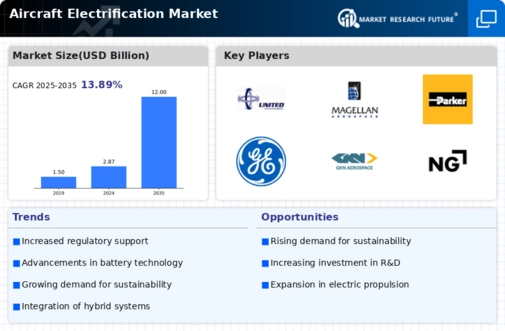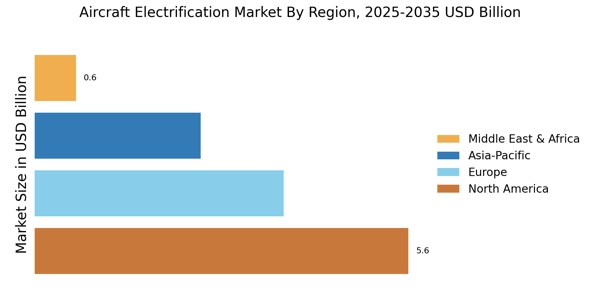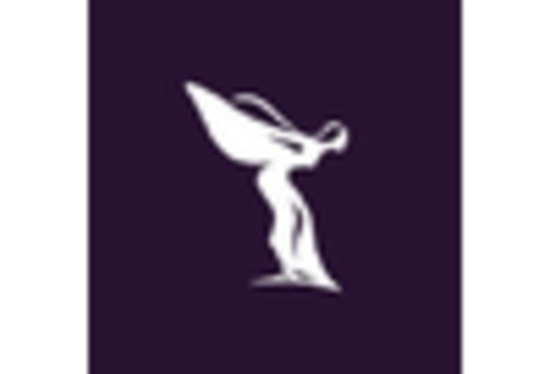Rising Fuel Costs
The Aircraft Electrification Market is significantly influenced by the rising costs of traditional aviation fuels. As fuel prices continue to escalate, airlines are increasingly seeking alternative energy sources to mitigate operational expenses. Electric and hybrid aircraft present a viable solution, offering lower energy costs and reduced reliance on fossil fuels. The potential for substantial savings on fuel expenditures is compelling, as electric propulsion systems can reduce fuel costs by up to 50%. This economic incentive is driving airlines to explore electrification options, thereby propelling the Aircraft Electrification Market forward. Analysts suggest that the shift towards electrification could lead to a more sustainable and economically viable aviation sector in the coming years.
Consumer Demand for Sustainable Travel
The Aircraft Electrification Market is increasingly shaped by consumer demand for sustainable travel options. Passengers are becoming more environmentally conscious and are actively seeking airlines that prioritize sustainability. This shift in consumer preferences is prompting airlines to invest in electric and hybrid aircraft as part of their commitment to reducing their carbon footprint. Market Research Future indicates that over 70% of travelers are willing to pay a premium for eco-friendly travel options. Consequently, airlines that adopt electrification technologies may gain a competitive edge in attracting environmentally aware customers. This trend is likely to drive the growth of the Aircraft Electrification Market, as airlines strive to align their operations with consumer expectations.
Investment in Research and Development
Investment in research and development is a critical driver for the Aircraft Electrification Market. As the aviation sector seeks to transition towards electrification, substantial funding is being allocated to R&D initiatives aimed at developing innovative electric propulsion systems and related technologies. Governments and private investors are recognizing the potential of electric aviation and are channeling resources into projects that promise to revolutionize the industry. Reports indicate that R&D spending in the aviation sector is expected to exceed USD 5 billion annually by 2027, focusing on electrification and sustainability. This influx of investment is likely to accelerate technological advancements and enhance the competitiveness of the Aircraft Electrification Market, paving the way for a new era in aviation.
Regulatory Support for Electrification
The Aircraft Electrification Market is experiencing a surge in regulatory support aimed at reducing carbon emissions and promoting sustainable aviation. Governments are implementing stringent regulations that encourage the adoption of electric and hybrid aircraft technologies. For instance, the International Civil Aviation Organization has set ambitious targets for reducing greenhouse gas emissions from aviation, which has prompted manufacturers to invest in electrification solutions. This regulatory landscape not only fosters innovation but also creates a competitive environment where companies are incentivized to develop cleaner technologies. As a result, the Aircraft Electrification Market is likely to witness accelerated growth, with projections indicating that the market could reach USD 30 billion by 2030, driven by these supportive policies.
Technological Innovations in Battery Systems
Technological advancements in battery systems are playing a pivotal role in the Aircraft Electrification Market. Innovations such as solid-state batteries and advanced lithium-ion technologies are enhancing energy density and reducing weight, which are critical factors for aircraft performance. These developments are expected to improve the range and efficiency of electric aircraft, making them more competitive with traditional jet engines. The market for advanced battery technologies is projected to grow significantly, with estimates suggesting a compound annual growth rate of over 20% through 2028. As battery technology continues to evolve, it is likely to unlock new possibilities for the Aircraft Electrification Market, enabling longer flights and broader applications of electric aviation.


















Leave a Comment